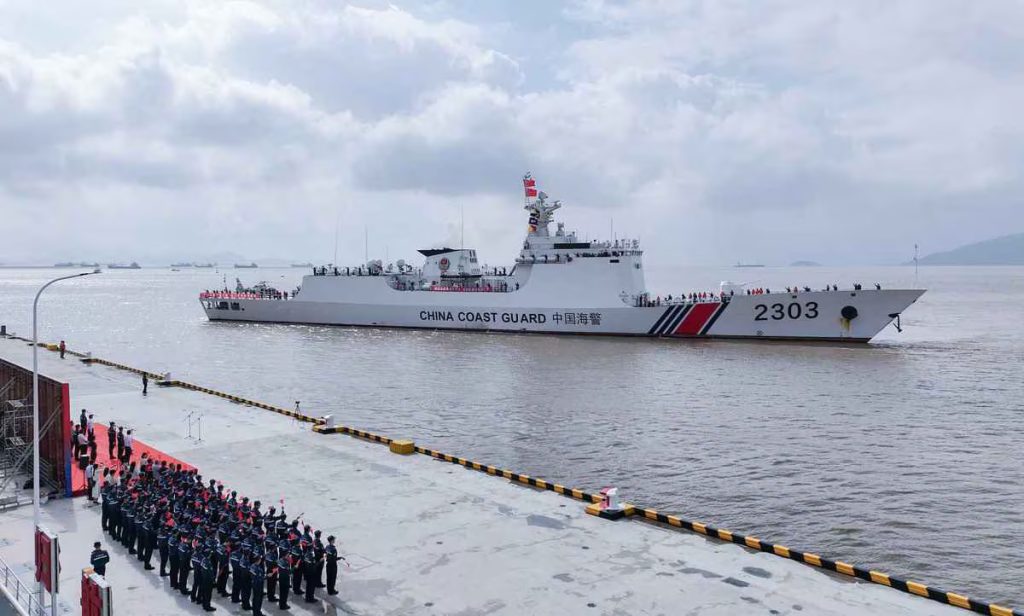
A CCG vessel (No. 2303) equipped with a 76mm cannon, as seen on the China Coast Guard website.
このページを 日本語 で読む
On March 24, China Coast Guard (CCG) ships entered Japanese territorial waters near the Senkaku Islands (Ishigaki City, Okinawa Prefecture). It was the longest such intrusion on record. That same day, another group of Chinese vessels appeared just outside the contiguous zone. These were not part of a crew rotation.
As a result, eight CCG ships were operating temporarily near the Senkakus. This was confirmed on March 25 through interviews with Japan Coast Guard (JCG) officials and data analysis by The Sankei Shimbun.
The second group of ships did not enter the contiguous zone, which lies 12 nautical miles (about 22 kilometers) outside Japanese territorial waters. As a result, the JCG did not officially announce their presence.
Signs of a 'Salami-Slicing' Strategy?
China's intentions are unclear. However, the move may be part of a so-called "salami-slicing strategy," where pressure is increased gradually through small, calculated actions.
According to JCG sources and data from the Automatic Identification System (AIS), four Chinese vessels were sailing in waters about four kilometers outside the contiguous zone on March 24. Two of these were armed ships equipped with 76mm rapid-fire guns.
Chinese Coast Guard ships usually operate in four-ship formations. They rotate out about once a month.
Initially, the JCG believed the second group of four ships was there for a routine crew rotation. However, those ships left the area between the night of March 24 and the morning of March 25 without replacing the four vessels that had entered Japanese territorial waters.
A JCG official said, "Their intent is unclear."
Reactions from Both Sides
Atsushi Toyama, a former chief of the 3rd Regional Coast Guard Headquarters and a former senior official at the 11th Regional Headquarters in Naha (which oversees the Senkaku area), commented:

"This kind of movement is highly unusual. Continued monitoring and vigilance are necessary."
On March 24, Liu Dejun, spokesperson for the CCG, claimed that Chinese vessels had driven away four Japanese fishing boats operating near the Senkaku Islands.
According to the CCG website, Liu stated:
"The Japanese fishing boats illegally entered Chinese territorial waters. In accordance with the law, our ships took necessary control measures, issued warnings, and drove them out."
He also asserted that the Senkaku Islands are "an inherent part of China's territory." He called on Japan to "immediately cease all illegal activities in the waters."
RELATED:
- Senkaku Islands: A New Key Exhibit on Japan's Territorial History and Disputes
- Secretary of Defense Pete Hegseth Needs a To-Do List For Japan
- Senkaku Islands Survey: Tensions in the Surrounding Waters
Authors: Naoki Otake, Ryo Nishiyama
このページを 日本語 で読む






